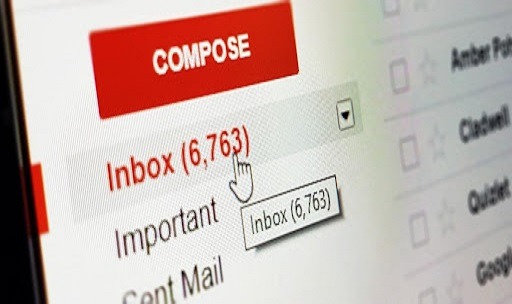How to Connect Headphones to a TV: Modern television has undergone a whirlwind of spectacular improvements as it transitioned from analog to digital. The resolution, visual fidelity, and internet-powered smart capabilities reflect a new wave of TV technology that was unimaginable even ten years ago.
But, in the case of televisions, change means fewer physical connections. While a lack of audio inputs and outputs may not bother most people, it can be inconvenient for those who appreciate the convenience of plugging in a pair of headphones to their TV’s 3.5mm headphone socket. However, all hope is not gone.
Even if your new TV lacks audio outputs and a USB adapter isn’t an option, there are lots of alternative ways to get TV sound into your headphones. For example, did you know that you can connect a set of wireless headphones to the majority of TVs and game systems? Or that you can route audio through popular streaming device remote controls?
Wired to wireless, there are plenty of new hookups to get your headphones and TV simpatico once again. Here’s an in-depth look at all your options.

Wired up
There are numerous more easy ways to receive your TV time without having to wire it in, which we will go over in detail lower down. However, if your setup allows for a wired pair of headphones — that is, you will be sitting close enough to the TV or audio device to comfortably cross the distance — there are a few solid options for plugging in.
Adapters
To connect using an adaptor, you must first determine what type of audio output your TV has. There should be an audio output connector on the back or side of your TV, or wherever your inputs are. There may be a 3.5mm (standard headphone) output on older televisions, making it simple to plug and play.
Older models, on the other hand, typically have stereo RCA audio connections, which will necessitate the use of an RCA-to-3.5mm female adapter, such as this one from Amazon. This type of setup is straightforward and inexpensive, but it isn’t ideal for most situations – after all, you don’t want a long wire snaking through the middle of your living room.
Newer televisions are a little difficult. Many television makers abandoned analog outputs in favor of digital optical outputs a long time ago. The result is a tiny, square-shaped door that is frequently outlined in vivid red light (or fitted with a rubber cap such as the one shown in the image above).
A digital-to-analog converter is required for this arrangement (DAC). This will not only allow you to connect a 3.5mm headphone port, but it will also convert the audio output to the proper format for playback in your headphones. Again, you’ll probably need a headphone extension cable to kick back.
You may also like Microsoft Surface Headphones 2: The less expensive ANC headphones
Connecting to a streaming device’s remote control
Another, more practical option is to connect to the remote control of your set-top streaming device if one is available. If you’ve been considering acquiring a set-top box, now is the time to do it. Streamers like the Roku Ultra and Nvidia’s Shield TV include built-in remote controls with a headphone connector. TCL’s 6-Series Roku TV remote also has a headphone port.
The only disadvantage of wiring your headphones in this manner is that you will only be able to listen to content provided by your streaming hub. It will fall on deaf ears if you watch TV mostly through a cable box.
Connecting through external audio devices
Devices like A/V receivers or even external speakers will usually have an accessible connection to plug in a pair of headphones. This is especially handy if you happen to have multiple source devices (e.g., a cable box or antenna, a streaming device, etc.). You’ll need to take a look at your hardware to see if there is a headphone output, or you could use one of the output-adapter setups we mentioned above (such as the RCA or digital optical adapters). Most A/V receivers will have a quarter-inch headphone input in the front, which requires nothing more than a simple adapter.
Wireless connection
For the vast majority of users, wireless headphones and adapters will be much more convenient for a living room setup, even if the connection process is slightly more involved.
TV Bluetooth streaming
TVs are steadily adding Bluetooth streaming as a standard feature. If you have a pair of Bluetooth headphones, you can check to see if your TV supports Bluetooth — this information should be located somewhere in the audio section of the settings. If your TV does support Bluetooth, simply set your headphones to pairing mode, and follow the on-screen instructions to get everything up and running.
One thing to keep in mind here, however, is latency. Many Bluetooth connections induce a small amount of lag between the TV and the headphones.
While this isn’t an issue for music streaming, even nominal lag can create sync issues between the on-screen video and the audio, meaning the actions on the screen will occur a few fractions of a second before you hear the sound.
It can be extremely annoying, especially to audio-minded folk, so you will want to make sure your TV/headphone combination doesn’t induce lag before investing in this route. Models with newer versions of the Bluetooth codec (version 4.0 or higher) may be your best bet, though many factors can induce latency.
Bluetooth through your set-top box
Streaming video devices like the Apple TV 4K and Amazon’s Fire TV Cube also stream audio via Bluetooth. After putting your Bluetooth headphones in pairing mode, just follow the onscreen instructions under the Bluetooth settings for your streaming box and you can begin streaming in no time.
Don’t forget that this method will only allow for listening to streaming content from the device you’ve paired to and won’t work as a catch-all solution. Again, you’ll always want to make sure neither of your devices — the box or the headphones — induces latency.
External Bluetooth adapter
If your TV doesn’t have Bluetooth connectivity and you don’t own a streaming device with Bluetooth, you can outfit your TV with a Bluetooth transmitter. These devices, which hardwire into your TV and beam out a Bluetooth signal, come in several forms, including USB dongles, 3.5mm dongles, and even breakout boxes.
If you can find a Bluetooth adapter that supports the audio output format of your TV, you’ll be able to easily pair Bluetooth headphones to it by simply following the pairing instructions that come with each device. Most devices also list latency issues, so check into it before you make a purchase.
Soundbars
Some soundbars, such as Sony’s HT-Z9F, not only allow you to stream Bluetooth audio from your phone but will also allow you to stream sound from them via Bluetooth. This is a great solution for those with Bluetooth headphones, as any audio being sent to the bar can be streamed.
Again, we caution lag, but more feature-packed soundbars may also adjust for latency, or allow you to do so in the settings. You obviously wouldn’t want to buy a soundbar just for this purpose, but if you’re looking for better audio in general, this could be well worth considering.
RF Headphones
Radio Frequency (RF) headphones from companies like Sennheiser and others connect to a base charging station that is directly wired to a TV or other output device, such as a cable box. Whatever your hardware, you need to match the connection types between the base station and your TV or another source device.
Double-check the connection types (optical, RCA, 3.5mm output, etc.), as it’s possible you need an adapter to make the link. Despite these potential extra steps, RF headphones are excellent for connecting wirelessly, as they often have better range and far less latency (if any) than Bluetooth headphones.
Gaming consoles and PCs
Gaming consoles are another easy way to connect to your TV with regular headphones or, ideally, a dedicated gaming headset. Most consoles are equipped with some form of headphone connectivity, allowing you to stream TV shows and movies from apps like Netflix and Hulu, as well as play Blu-rays, in addition to gaming.
We’ll discuss how to connect to each major console either through wired or wireless connections.
PlayStation 5, PS4, and PS4 Pro
The PlayStation 5, PlayStation 4, and PS4 Pro are probably the easiest consoles for connecting headphones or gaming headsets due to their support of several common connection types and simple setup (though it should be noted that many common Bluetooth headphones may not be supported). The methods for connecting are identical between the two versions of the console.
If you’re going the wired route, the PS5’s Dualsense and PS4’s Dualshock 4 controller both have a 3.5mm jack, just under the PlayStation button and between the thumbsticks. Just plug in your wired headset, and you’re good to go.
If you’re planning to go wireless, the PS5 does not support Bluetooth audio at this time. If you’re using a wired or wireless USB headset and are still rocking a PS4, you can plug the dongle directly into one of the PS4’s USB ports.
Your console should quickly identify the headset and begin playback. Note that some USB headsets are designed for PC and require driver downloads or extra software to use features like surround sound or EQ settings. While you will get basic functionality with these headsets on PS4, it’s best to look for PS4-specific models to get the best experience.
Finally, select supported Bluetooth headphones are also an option on PS4. To pair the headphones, make sure they’re in pairing mode, which is typically accessible via the Pairing or Power button. Then, on the PS4 home screen, select the Settings tab. Scroll down and select Devices, then Bluetooth Devices.
Your Bluetooth headphones should show up if they’re in discovery/pairing mode. However, you may have to give the console some time to find them, and only PlayStation-supported headphones will work. If this doesn’t work, you can also plug the device into the PS4 with a USB cable and allow a few moments for the console to recognize the new headphones.
Xbox Series X, Xbox Series S, and Xbox One
In terms of hard-wire headphone connections, both the Xbox Series X and Series S feature 3.5mm headphone connections on the console controllers. Depending on the model year of your Xbox One, the controller may or may not feature this same port.
A wireless connection is a different animal. Xbox consoles do not support Bluetooth, nor do they support the majority of wireless USB headsets. Instead, you will need to seek out Xbox One-specific wireless headsets and then follow the manufacturer’s instructions for connecting them.
Nintendo Switch and Wii U
Nintendo’s most recent console, the hybrid Nintendo Switch, has a few options for connecting 3.5mm and Bluetooth headphones. For wiring directly into the Switch, a headphone jack sits on the upper-left side of the console (Note: This jack only supports audio out, and not mics.
To use a mic for voice chat, you need to connect via Nintendo’s voice chat app for smartphones). This can be used whether the console is docked or undocked — just be mindful of the distance between you and the console when docked so it isn’t accidentally pulled out and dropped.
There are two options for connecting Bluetooth headphones. The first is to purchase a Bluetooth receiver dongle that plugs into the 3.5mm jack and pair your Bluetooth headphones to it. Again, you will want to be careful not to use an adapter that induces latency, so shop carefully and read the reviews.
The second option is to plug in the Bluetooth headphones’ dongle into one of the USB ports on the Switch Dock. This requires you to have updated to the 4.0 Switch firmware or higher (you can double-check your firmware version under the System menu, as well as check for updates), but once you have the proper version, all you need to do is plug in a USB Bluetooth dongle and wait for the headphones to pair.
While this can only be done while the system is docked, a workaround exists for the handheld mode. You will once again need to be running firmware update 4.0 or higher and will need a USB-to-USB 3.0 adapter to plug into the USB 3.0 port under the system. This setup isn’t ideal, but it’s an effective workaround nonetheless.
SteelSeries’ Arctis line of headphones, such as the excellent Arctis 7 or the Arctis 3 Bluetooth, make for prime choices since they feature both 3.5mm and simple Bluetooth connectivity.
On the Wii U, you can plug a pair of headphones into the top of the Wii U Gamepad. Unfortunately, USB headsets and Bluetooth devices are not supported.
PC
Finally, if you happen to have a PC connected to your TV, you’re in luck — most PCs can support virtually any pair of headphones or headset, both wired and wireless. PCs often have a 3.5mm jack on either the front or back of the tower (or both) where you can plug in directly — just look for the tiny headphones symbol above the jack.
USB headsets can also be plugged right into any open ports on your PC. Headsets and headphones are usually plug-and-play, but sometimes times require drivers or control software to work properly. If you’re unsure as to what you might need, double-check your manufacturer’s setup guides or user materials.
Bluetooth is also possible on most PCs. To pair your headphones, put your Bluetooth device into discovery mode, and enable Bluetooth on your PC from the audio settings. Your PC should identify the device, and once it’s connected, you’ll be set.
Would you like to read more about How to Connect Headphones to a TV-related article? If so, we invite you to take a look at our other tech topics before you leave!










